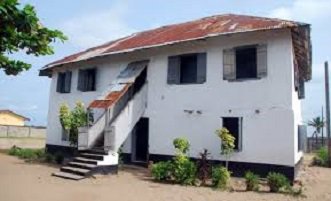
PERHAPS it is an indication that domestic tourism is developing in Nigeria, which would be a welcome development. Such conclusion would require consistently improved tourist traffic statistics; it is nevertheless bright news that the storied first storey building in Nigeria reportedly recorded more visitors last year than ever before.
Located in Badagry, Lagos State, the famous 171-year-old building attracted 5,140 visitors from January to December 2016, according to the site’s facility manager, Mr. Hodonu Daniel. “We have been able to attract more tourists to this site because of the proper maintenance of the place and we have been able to preserve its originality,” he was quoted as saying.
He added that: “In year 2015, those that visited the site were 3,457 but we were able to increase the number due to the historic nature of this site. The peak period is usually during Christmas, New Year, Easter, Sallah and whenever students are in session.”
There is no doubt about the site’s historical significance. The building’s foundation was reportedly laid in 1842 and its construction was completed in 1845. This 19th century monument stands as evidence of an era in the country’s evolution. The building, situated on the Marina waterfront, was built by early Christian missionaries who belonged to the Church Missionary Society (C.M.S.).
A report said: “The building served as vicarage for Saint Thomas Anglican Church and was later used by Samuel Ajayi Crowther, the first African C.M.S. bishop that translated the Holy Bible from English to Yoruba.” An interesting visitor’s account, which is relevant for its details, said: ”In one of the two rooms on the upper floor of the building, there lay a glass case containing the English and Yoruba versions of the Bible translated by Ajayi Crowther.”
According to the account, it was said that “the floor also housed the room of the ‘first teacher in Nigeria’, Mr. Claudius Philips. Philips, who wore a black shirt, suit and white trousers in the portrait which adorned the wall, lived in the room for 23 years, from 1845 to 1868.” The account continued: “In another room, the picture of Herbert Macaulay, Ajayi Crowther’s grandson, hung on the wall. There was also a well in the compound of this historical building which was dug in 1842. The well served as a source of drinking water for some people living in the community.
This building was originally built with coconut fibers and bamboo, and located on an area of 1,144 square feet. The more than a century and a half monument building was given a facelift to preserve it for coming generations.”
The building is a place of history, and its attraction lies in its place in history. It should attract more visitors than the record indicates. Why that is not the case is food for thought.
What drives tourism, whether it is domestic or international, is a multi-dimensional package, including, particularly, security and infrastructure. In the case of Badagry, the place is well-known for its slavery-related attractions, including a slave museum, a slave port and slave routes. During the Transatlantic Slave Trade that took place across the Atlantic Ocean from the 15th to the 19th century, the town was a major port connected with the export of slaves to the Americas, mainly to Salvador, Bahia in Brazil.
Following the end of the slave trade, it became an important operational base for early Christian missionaries. Indeed, it is said that Christianity was first preached in Nigeria at Badagry in 1842 by Rev Thomas Birch Freeman who is also said to have celebrated the first Christmas in Nigeria the following year. The Agiya Tree Monument beside the Badagry Town Hall is said to be the spot where Christianity was first preached.
It is noteworthy that Daniel called on the political authorities to provide support toward giving the building a facelift, saying that only the Anglican Church had been providing such assistance. If that is the case, it amounts to an abdication of responsibility because the monument concerned is too important to be trivialised by the political authorities just as it deserves the attention of non-governmental interests.
Tourism needs a tourist-friendly environment to thrive. Beyond the Badagry building, attractions abound across the country begging for greater governmental and non-governmental action.
END

Be the first to comment